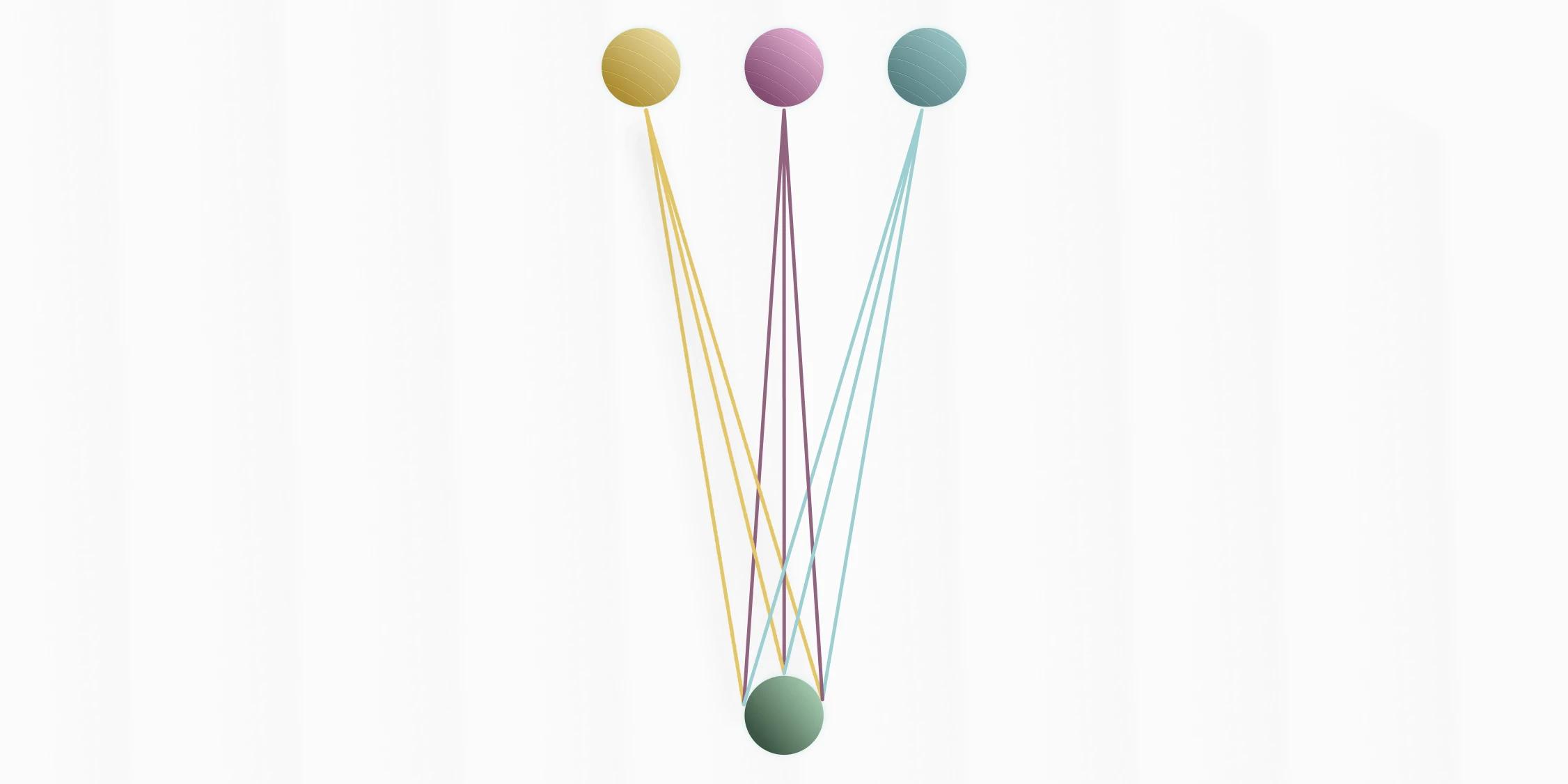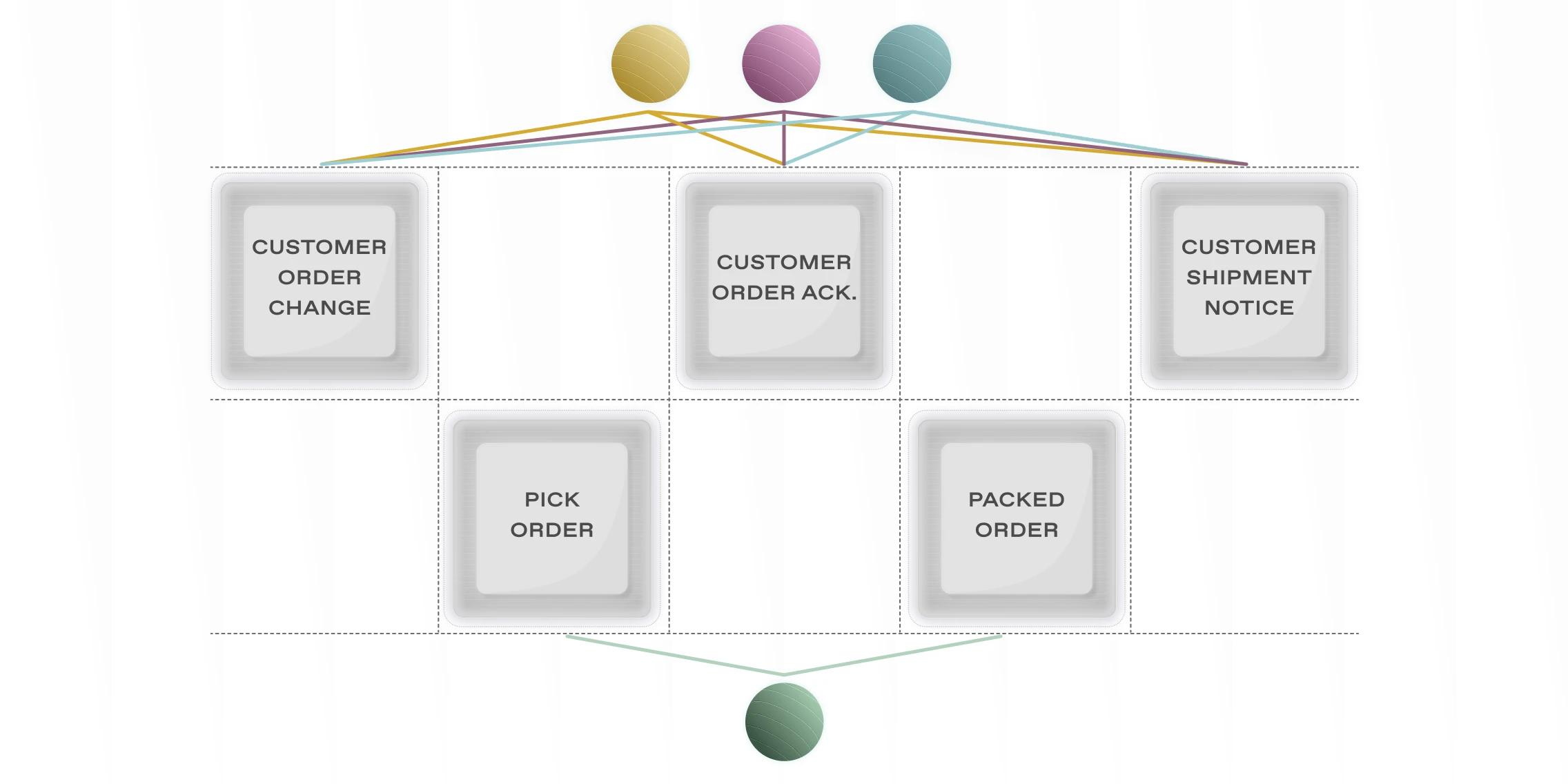The Power of a Common Language
Learn why mapping each system once to Shep's Integration Fabric, embedded with a common data model, is infinitely more powerful, scalable, and resilient than connecting them to each other.
Learn why mapping each system once to Shep's Integration Fabric, embedded with a common data model, is infinitely more powerful, scalable, and resilient than connecting them to each other.
WHY SHEP
From Trapped Logic
to Shared Intelligence
Shep's Integration Fabric is the foundation for your entire order fulfillment ecosystem. It’s the difference between designing a disposable, single-use 'bridge' for every connection and investing in a reusable, intelligent 'blueprint'.

Connection-Specific: Traps all field mappings, business rules, and data transformations within one specific connection. Eliminates reusability, forcing businesses to start from scratch for every new integration.

Centralized & Reusable: Creates a standardized 'blueprint' for common business processes (like an 'order' or 'invoice'). Systems’ fields mapped once to the fabric, unlocks reusable, powerful business rules and data transformations for every integration.
WHY SHEP
Traditional Integration Pains
Poor ERP performance due to customized fields and tables for every integration.
Fragmented integrations causing data flow & accuracy issues that lead to fines.
Coupled integrations require full integration rebuild when switching ERPs.
Disconnected order fulfillment integrations require human intervention.
Unique integrations create customer-specific processes and checklists known by few.
Too many integration points to the ERP slows down version-upgrade testing.
Lack of common operations requires ‘systems jumping’ to determine order status.
Weeks/months to fix critical errors due to unique customer integrations.
Poor ERP performance due to customized fields and tables for every integration.
Fragmented integrations causing data flow & accuracy issues that lead to fines.
Coupled integrations require full integration rebuild when switching ERPs.
Disconnected order fulfillment integrations require human intervention.
Unique integrations create customer-specific processes and checklists known by few.
Too many integration points to the ERP slows down version-upgrade testing.
Lack of common operations requires ‘systems jumping’ to determine order status.
Weeks/months to fix critical errors due to unique customer integrations.

Shep's Integration Fabric standardizes data from every connected system into one language to bring shared context and meaning across the order fulfillment ecosystem. Data becomes consistent, reliable, and universally understood before it is used in any business process.

Game-Changing Results
Fabric Facts
Results you can only achieve when you
integrate using Shep’s Integration Fabric.
75%*
Fewer integrations and customizations to your ERP
10x
Faster setup time
for new integrations
ZERO
Additional tools needed for visibility and audit trails
95%
Reduction in manual
order process work